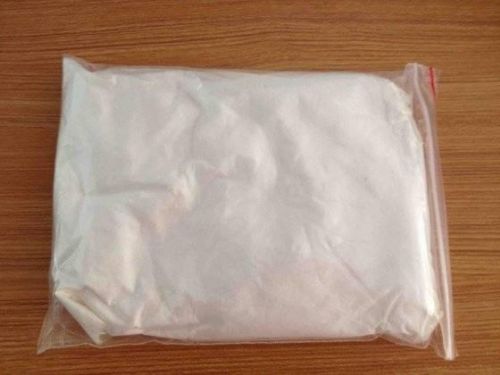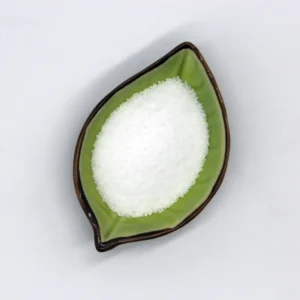Buy N-t-BOC-MDMA Cas 1228259-70-8
Buy N-t-BOC-MDMA Cas 1228259-70-8
N–t-BOC-MDMA is a chemical compound which can be both a synthetic precursor to, or a prodrug of the empathogenic drug MDMA. It was first identified in Australia in 2015 as a seizure by customs, and has subsequently been found in China, the Netherlands and other European countries. Originally it was thought to be intended as a non-illegal form of MDMA which could be easily converted into the prohibited final product after importation, however one seizure by police found N–t-BOC-MDMA in the process of being pressed into pills, and experiments with simulated gastric fluid confirmed that it can be broken down to MDMA by human stomach acid. Similar N-protected compounds such as N–t-BOC-methamphetamine, N–p-tosyl-methamphetamine, N–t-BOC-ketamine, N–t-BOC-norketamine, and N-methoxycarbonyl-MDA have also been encountered by law enforcement Buy N-t-BOC-MDMA Cas 1228259-70-8
N-t-Boc-mdma
- N-t-Boc-mdma
- 1228259-70-8
- DZ4398X4QR
- 1,1-Dimethylethyl N-(2-(1,3-benzodioxol-5-yl)-1-methylethyl)-N-methylcarbamate
- Carbamic acid, N-(2-(1,3-benzodioxol-5-yl)-1-methylethyl)-N-methyl-, 1,1-dimethylethyl ester
-
Buy N-t-Boc-mdma (EVT-1470762) | 1228259-70-8 –
Compound Description: N-tert-butoxycarbonyl-pseudoephedrine (t-BOC-pseudoephedrine) is a t-BOC protected derivative of pseudoephedrine. Relevance: This compound also belongs to the …
-
Di-tert-butyl dicarbonate = 98.0 GC 24424-99-5 – MilliporeSigma
Di-tert-butyl dicarbonate (Boc 2 O) has been used in the synthesis of: An azobenzene amino acid(aa). N-tert-butoxycarbonyl-3,4-methylenedioxymethamphetamine (t-BOC-MDMA) from …
-
N-t-BOC-MDMA – Wikipedia
N-t-BOC-MDMA is a chemical compound which can be both a synthetic precursor to, or a prodrug of the empathogenic drug MDMA. It was first identified in Australia in 2015 as a seizure by …
-
N-t-Boc-mdma | C16H23NO4 | CID 46237878 – PubChem
N-t-Boc-mdma | C16H23NO4 | CID 46237878 – structure, chemical names, physical and chemical properties, classification, patents, literature, biological activities, safety/hazards/toxicity …
-
Di-tert-butyl dicarbonate, >=9 | 34660-100G-F | SIGMA-ALDRICH
Di-tert-butyl dicarbonate (Boc 2 O) is a reagent mainly used for the introduction of the Boc protecting group to amine functionalities. It is also used as a dehydrating agent in some …
-
Di-tert-butyl dicarbonate, >=98.0% (GC) – Thomas Scientific
Shop MilliporeSigma Di-tert-butyl dicarbonate, >=98.0% (GC) at Thomas Scientific, your trusted partner in Science.
-
3,4-MDMA tert-butyl Carbamate (CAS 1228259-70-8) – Cayman …
3,4-MDMA tert-butyl Carbamate: An Analytical Reference Standard. CAS Number: 1228259-70-8. Synonyms: t-BOC-3,4-MDMA, N-t-Butoxycarbonyl-MDMA, 3,4-MDMA t-butyl Carbamate, 3,4 …
-
Buy t-Boc-N-Amido-PEG5-Ms (EVT-2520402) | 2128735-28-2
N-tert-butoxycarbonyl-MDMA (t-BOC-MDMA) Compound Description: N-tert-butoxycarbonyl-MDMA (t-BOC-MDMA) is a derivative of the illicit drug 3,4-methylenedioxymethamphetamine …
-
≥98.0% (GC), for peptide synthesis | Sigma-Aldrich – MilliporeSigma
Boc-L-Dmt-OH as a fully N,S-blocked cysteine derivative for peptide synthesis by prior thiol capture. Facile conversion of N-terminal Boc-L-Dmt-peptides to H-Cys(Scm)-peptides
-
Buy (Di-tert-butoxycarbonyl)acetylamine (EVT-1628994) | 1588441 …
Compound Description: N-tert-butoxycarbonyl-MDMA (t-BOC-MDMA) is a derivative of the illicit drug MDMA (3,4-methylenedioxymethamphetamine). It has been identified as a new potential
(Di-tert-butoxycarbonyl)acetylamine
Catalog Number: EVT-1628994CAS Number: 1588441-36-4Molecular Formula: C12H21NO5Molecular Weight: 259.3 g/molThe product is for non-human research only. Not for therapeutic or veterinary use.Product Introduction
Overview
(Di-tert-butoxycarbonyl)acetylamine is a chemical compound that falls under the category of amides and is notable for its protective group functionalities in organic synthesis. It is derived from acetylamine through the introduction of two tert-butoxycarbonyl (Boc) groups, which are commonly used to protect amine functionalities during chemical reactions. This compound is particularly significant in the field of medicinal chemistry and peptide synthesis, where the protection and subsequent deprotection of amines are crucial for the successful synthesis of complex molecules.
Source and Classification
The primary source for (Di-tert-butoxycarbonyl)acetylamine is di-tert-butyl dicarbonate, a widely used reagent in organic synthesis known for its ability to introduce Boc groups to amines. This compound can be classified as a derivative of acetylamine, specifically an N,N-di-Boc-acetylamine. In terms of its chemical structure, it features two tert-butoxycarbonyl groups attached to the nitrogen atom of acetylamine, which enhances its stability and reactivity in various synthetic pathways.
Synthesis Analysis
Methods
The synthesis of (Di-tert-butoxycarbonyl)acetylamine typically involves the reaction of acetylamine with di-tert-butyl dicarbonate. The reaction can be conducted under mild conditions, often utilizing a base such as triethylamine to facilitate the formation of the Boc-protected product.
Technical Details
- Reagents:
- Acetylamine
- Di-tert-butyl dicarbonate
- Base (e.g., triethylamine)
- Procedure:
- Dissolve acetylamine in an appropriate solvent (commonly dichloromethane).
- Add di-tert-butyl dicarbonate and a base while stirring at room temperature.
- Allow the reaction to proceed for several hours until completion.
- The product can be purified through standard techniques such as column chromatography.
This method is efficient and provides good yields of (Di-tert-butoxycarbonyl)acetylamine, making it suitable for laboratory-scale applications.
Molecular Structure Analysis
Structure
The molecular formula for (Di-tert-butoxycarbonyl)acetylamine is C12H23N2O4. The structure consists of:
- Two tert-butoxycarbonyl groups attached to the nitrogen atom.
- An acetyl group connected to the nitrogen.
Data
The compound’s molecular weight is approximately 243.32 g/mol. Its structural representation highlights the presence of carbon, nitrogen, and oxygen atoms in a specific arrangement conducive to its reactivity and stability.
Chemical Reactions Analysis
Reactions
(Di-tert-butoxycarbonyl)acetylamine can participate in various chemical reactions typical for amides and Boc-protected compounds. Notably:
- Deprotection: The Boc groups can be removed using strong acids such as trifluoroacetic acid, regenerating the free amine functionality.
- Coupling Reactions: It can serve as an intermediate in peptide synthesis by coupling with other amino acids or peptide fragments.
Technical Details
The reactions involving (Di-tert-butoxycarbonyl)acetylamine often require careful control of conditions to prevent unwanted side reactions, especially during deprotection steps where sensitive functional groups may be present.
Mechanism of Action
The mechanism by which (Di-tert-butoxycarbonyl)acetylamine acts primarily revolves around its ability to protect amine functionalities during synthetic processes. The Boc groups shield the amine from nucleophilic attack, allowing chemists to perform other modifications on adjacent functional groups without interference.
- Protection: The introduction of Boc groups prevents unwanted reactions with electrophiles.
- Deprotection: Upon treatment with acids, the Boc groups are cleaved, regenerating active amines suitable for further reactions.
This dual functionality makes it a valuable tool in organic synthesis and medicinal chemistry.
Physical and Chemical Properties Analysis
Physical Properties
- Appearance: Typically a colorless or light yellow viscous liquid.
- Solubility: Soluble in organic solvents such as dichloromethane and ethyl acetate but insoluble in water due to its hydrophobic nature.
Chemical Properties
Relevant data indicate that compounds like (Di-tert-butoxycarbonyl)acetylamine are critical intermediates in various synthetic pathways due to their favorable reactivity profiles.
Applications
(Di-tert-butoxycarbonyl)acetylamine finds extensive applications in:
- Peptide Synthesis: Used as a protecting group for amino acids during solid-phase peptide synthesis.
- Medicinal Chemistry: Serves as an intermediate in the development of pharmaceutical compounds where selective protection of amines is necessary.
- Organic Synthesis: Employed in various synthetic routes that require temporary protection of amine functionalities.
Properties
CAS Number
1588441-36-4Product Name
(Di-tert-butoxycarbonyl)acetylamineIUPAC Name
tert-butyl N-acetyl-N-[(2-methylpropan-2-yl)oxycarbonyl]carbamateMolecular Formula
C12H21NO5Molecular Weight
259.3 g/molInChI
InChI=1S/C12H21NO5/c1-8(14)13(9(15)17-11(2,3)4)10(16)18-12(5,6)7/h1-7H3InChI Key
JRIWBSVVECUGGL-UHFFFAOYSA-NSMILES
CC(=O)N(C(=O)OC(C)(C)C)C(=O)OC(C)(C)CCanonical SMILES
CC(=O)N(C(=O)OC(C)(C)C)C(=O)OC(C)(C)C - Reagents:






Reviews
There are no reviews yet.